Reptiles
Fourty-two species of reptiles have been recorded at Arid Recovery
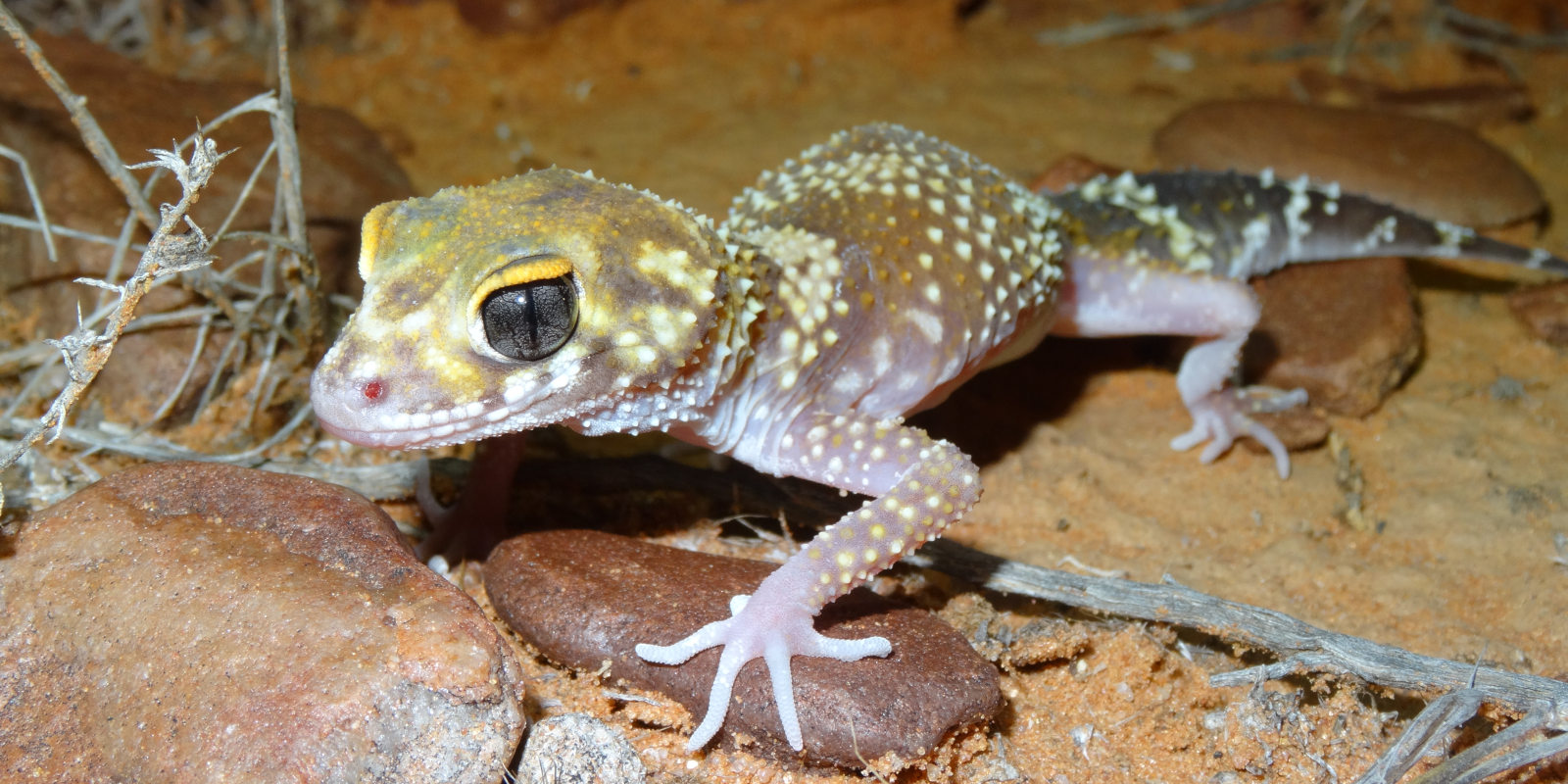
Since 1998, researchers at Arid Recovery have been sampling and documenting reptile populations both within and outside the reserve. The feral-proof fence has had a significant impact on these reptiles
What has Arid Recovery learnt?
Reptiles are more abundant outside the reserve than inside
Every year, Arid Recovery carries out extensive pitfall trapping surveys to monitor reptile populations in and around the reserve. These surveys have revealed that there are more reptiles outside the reserve than inside. Inside the reserve, the absence of cats and foxes has led to a significant increase in sand goanna (Varanus gouldii) populations. This rise in sand goannas may be causing a decline in the number of smaller reptiles due to predation. Bilbies are omnivores, and may also be responsible for the decline in reptiles inside the reserve.  Volunteers checking pitfall traps for reptiles
Volunteers checking pitfall traps for reptiles
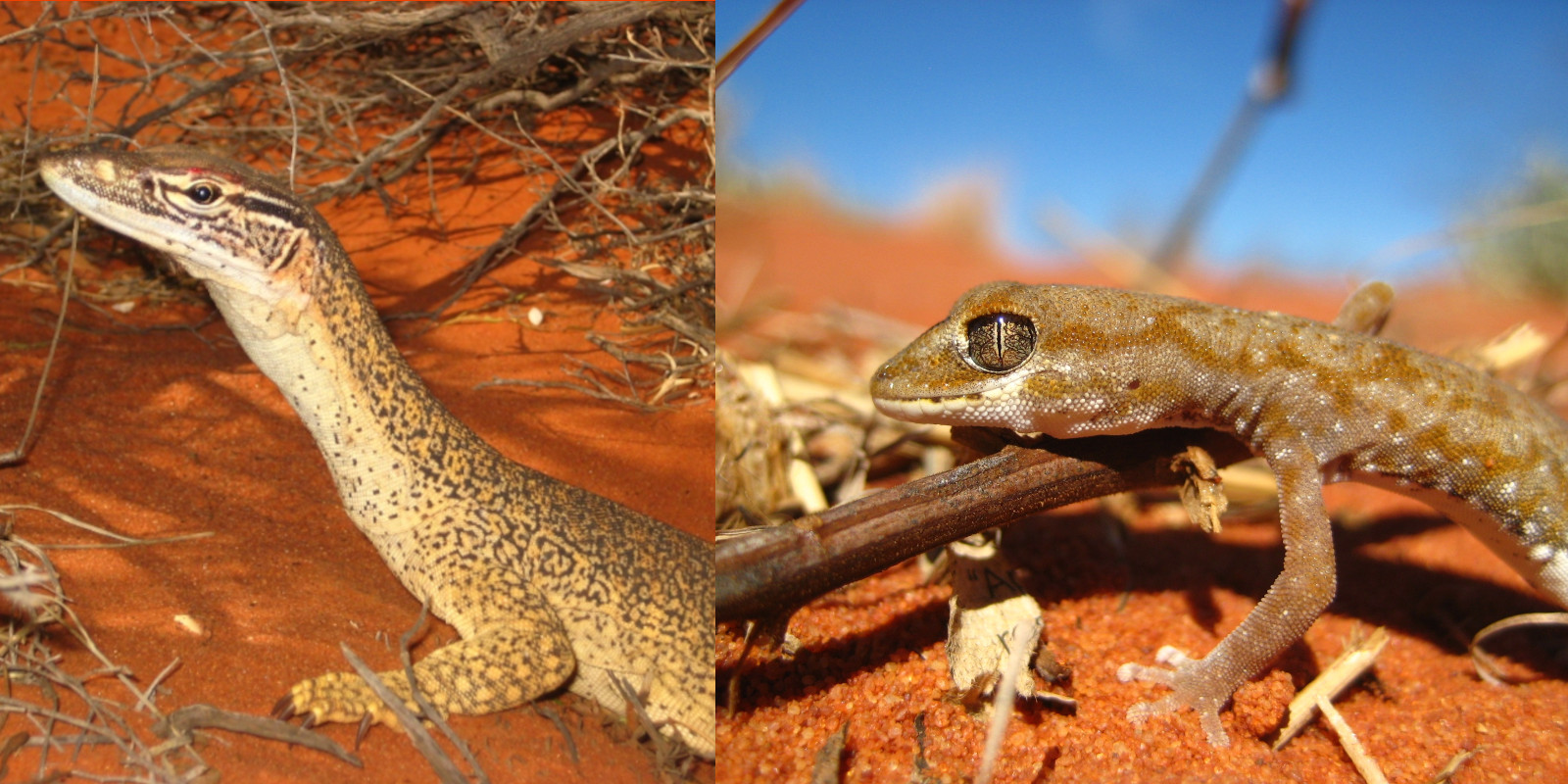 Sand goannas (Varanus gouldii) (left) may be preying upon smaller reptiles such as the beaded gecko (Lucasium damaeum) (right)
Sand goannas (Varanus gouldii) (left) may be preying upon smaller reptiles such as the beaded gecko (Lucasium damaeum) (right)
Captive-bred woma pythons were not a successful reintroduction
The woma (Aspidites ramsayi) is a large python native to arid and semi-arid regions of Australia. Historically, woma pythons used bilby burrows for shelter. Land clearance and introduced predators have led to significant declines in their population. In 2007, ten captive-bred womas were released at Arid Recovery and were radio-tracked after their release. Unfortunately, all of them were killed or eaten by mulga snakes (Pseudechis australis) within 41 to 123 days. The captive-bred womas likely lacked predator awareness, and were more vulnerable to predation. Futhermore, their inexperience in feeding and finding optimal refuges may have made them more susceptible to mulga snakes.
Although woma pythons were not successfully reintroduced at Arid Recovery, our animal ambassador Tirari represents the species. Tirari loves to meet people at events and helps with snake awareness workshops
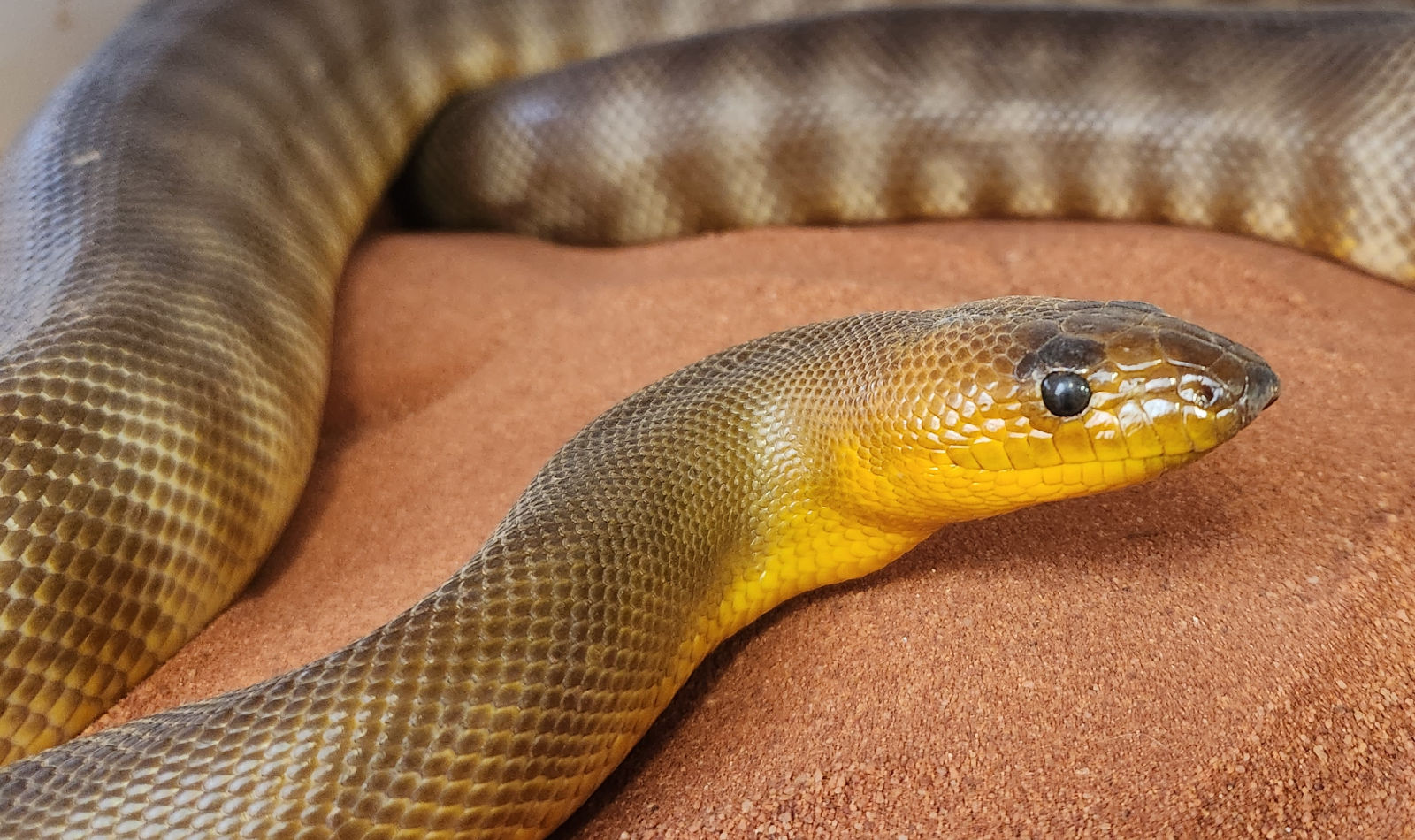 Tirari the woma python
Tirari the woma python
Reptile profiles
Geckos are a large and diverse group of lizards found throughout Australia. These nocturnal reptiles are known for their distinctive vocalizations and sticky toe pads. Geckos do not have movable eyelids; instead, their eyes are covered by a transparent spectacle. They use their flat, fleshy tongues to keep their lidless eyes clean and moist. Geckos can shed their tails to escape predators, which is called tail autonomy. The tail can regenerate over time, it is a cartilaginous tube that lacks the skeletal and neural structures of the original tail.
.jpg?lang=en-AU) Geckoes of Arid Recovery (clockwise from top left): Bynoe's gecko (Heteronotia binoei), tree dtella (Gehyra variegata), tessellated gecko (Diplodactylus tessellatus), and three-lined knob-tail gecko (Nephrurus levis)Goannas are iconic reptiles found across Australia, varying in size and habitat preference from small, tree-dwelling species to larger, ground-dwelling varieties. All goannas are egg-laying and mostly carnivorous, with strong limbs and a snake-like forked tongue. Australia is home to 28 goanna species. The sand goanna (Varanus gouldii), found at Arid Recovery, was one of the main predators of mammals and until western quolls were reintroduced in 2017.
Geckoes of Arid Recovery (clockwise from top left): Bynoe's gecko (Heteronotia binoei), tree dtella (Gehyra variegata), tessellated gecko (Diplodactylus tessellatus), and three-lined knob-tail gecko (Nephrurus levis)Goannas are iconic reptiles found across Australia, varying in size and habitat preference from small, tree-dwelling species to larger, ground-dwelling varieties. All goannas are egg-laying and mostly carnivorous, with strong limbs and a snake-like forked tongue. Australia is home to 28 goanna species. The sand goanna (Varanus gouldii), found at Arid Recovery, was one of the main predators of mammals and until western quolls were reintroduced in 2017.
Skinks are the largest family of Australian lizards. They are known for their smooth, shiny scales and elongated bodies. With over 400 species, skinks are one of the most varied and widespread reptile groups.The majority of small skinks are insectivores, but some larger species such as the shingleback(Tiliqua rugosa) are omnivores.
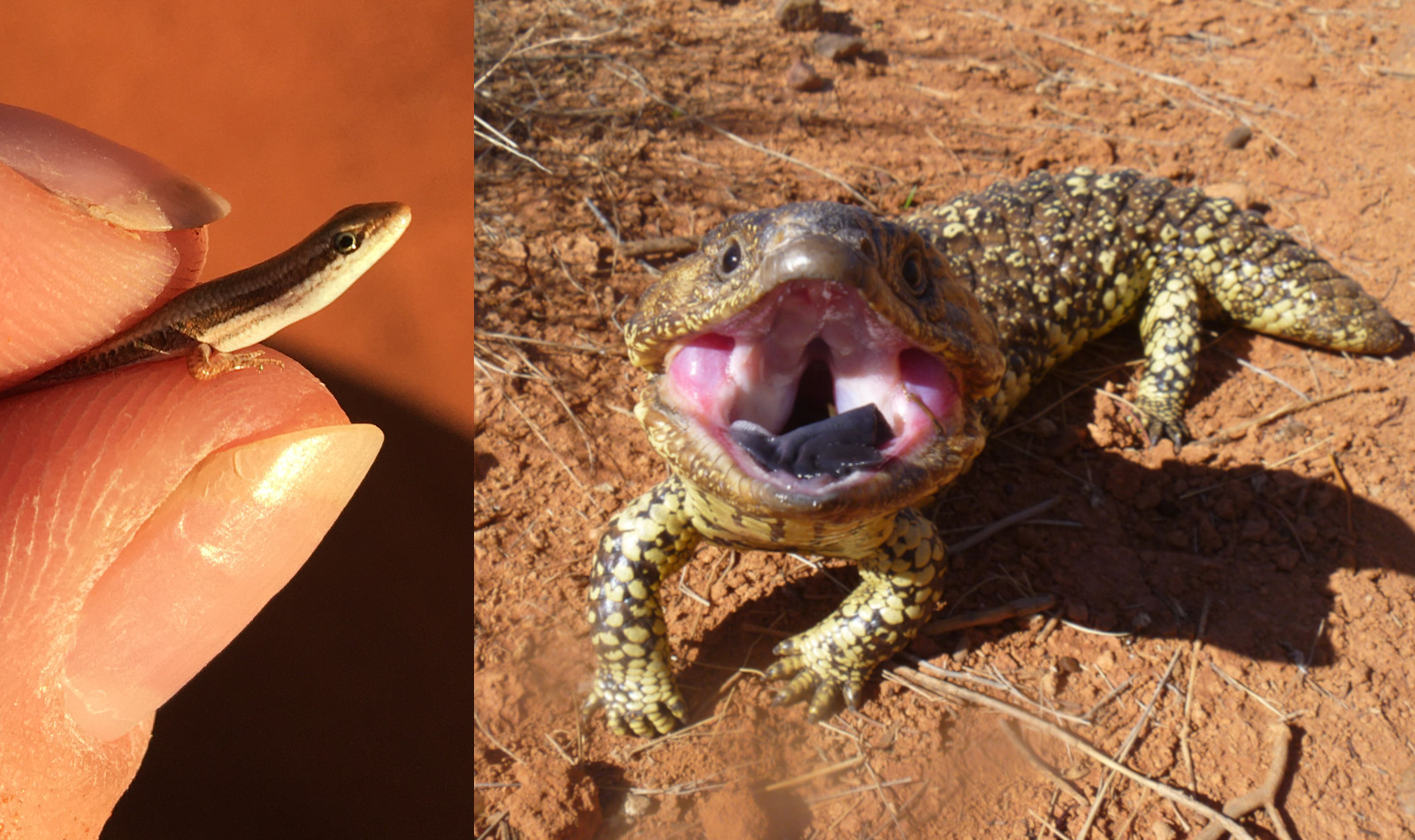 The common dwaft skin (Menetia greyii) is one of the smallest skinks found on the reserve (left), compared to the sleepy lizard (right)Dragons are known for their spiny appearance and vibrant colours. There are around 50 species found in Australia. Dragons are well adpated to arid envrionments and are active during the day. Most dragons eat invertebrates, but some will also eat wild flowers and small mammals.
The common dwaft skin (Menetia greyii) is one of the smallest skinks found on the reserve (left), compared to the sleepy lizard (right)Dragons are known for their spiny appearance and vibrant colours. There are around 50 species found in Australia. Dragons are well adpated to arid envrionments and are active during the day. Most dragons eat invertebrates, but some will also eat wild flowers and small mammals. 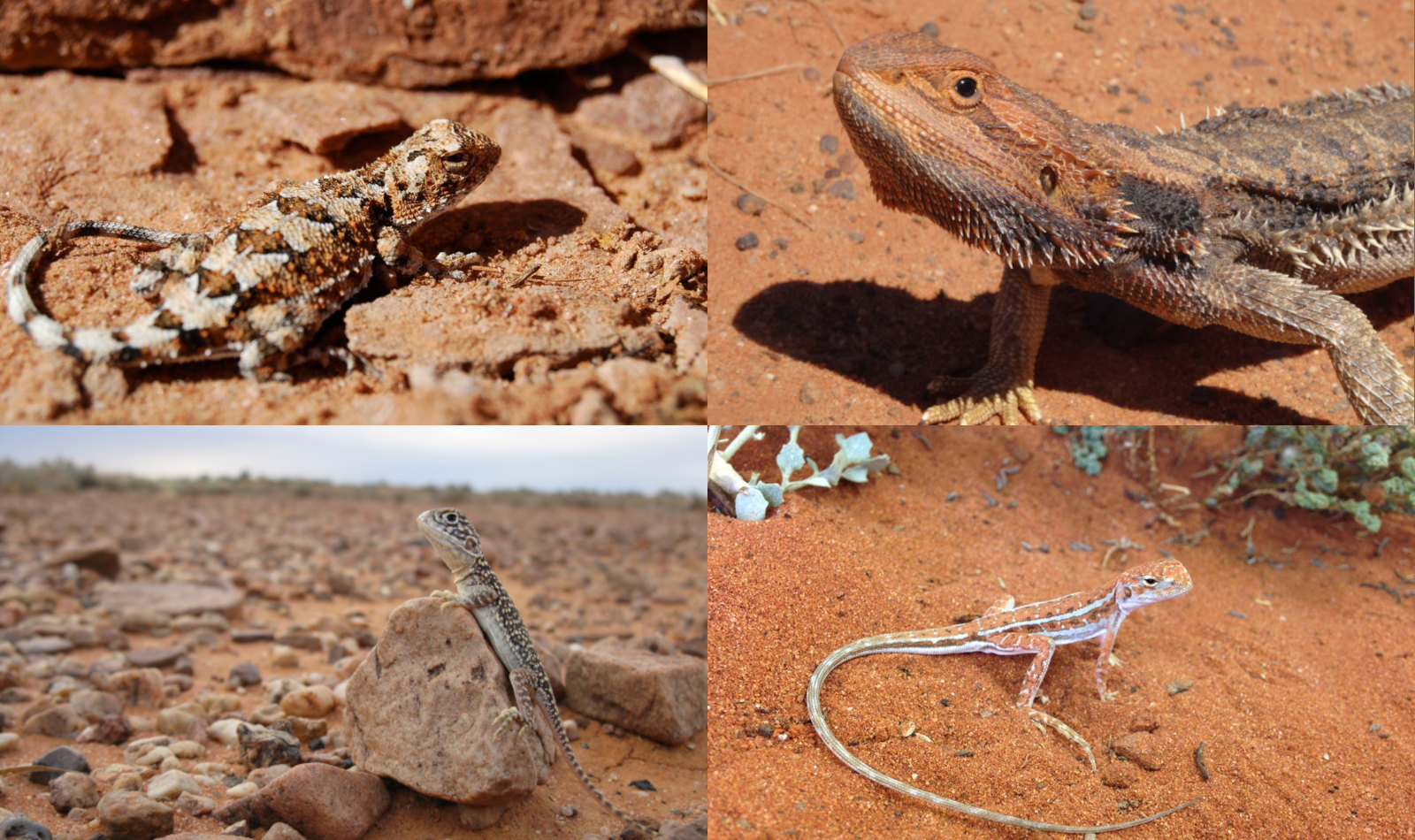 Dragons of Arid Recovery (clockwise from top left): Earless dragon (Tympanocryptis lineata), central bearded dragon (Pogona vitticeps), central netted dragon (Ctenophorus nuchalis), and mallee military dragon (Ctenophorus fordi)
Dragons of Arid Recovery (clockwise from top left): Earless dragon (Tympanocryptis lineata), central bearded dragon (Pogona vitticeps), central netted dragon (Ctenophorus nuchalis), and mallee military dragon (Ctenophorus fordi)
Snakes in arid Australia are highly adapted to survive in harsh, dry environments. Species such as the mulga snake (Pseudechis australis), western brown (Pseudonaja nuchalis), and the desert banded snake (Simoselaps bertholdi) are common in these regions. These snakes have evolved to cope with extreme temperatures and scarce water sources, often being active during cooler parts of the day or night.